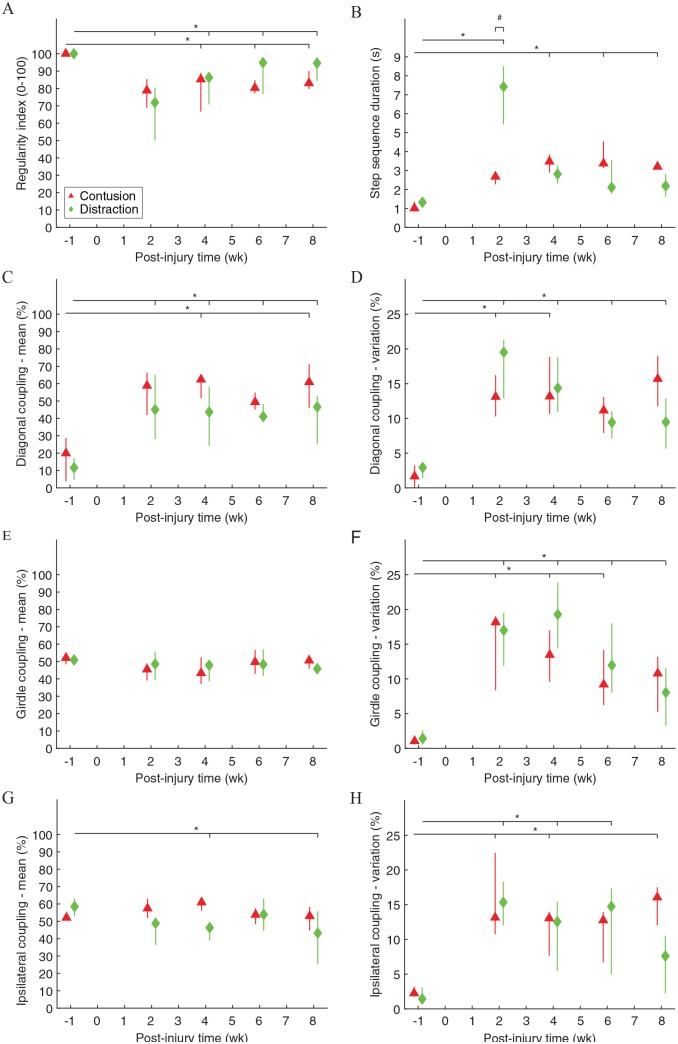Figure 1.
Inter-paw coordination during walking on the walkway. Regularity index expressed the number of normal step sequence patterns (ie, each of the 4 paws was used exactly once in a step cycle) relative to the total number of paw placements (A). Step sequence duration was the time needed to complete a step cycle (ie, each of the 4 paws was used at least once) (B). Coupling expressed the temporal relationship between the placement of 2 paws within a step cycle (C, E, G) and among step cycles (D, F, H). Diagonal, girdle, and ipsilateral couplings were measured from the LF-RH, LF-RF, and LF-LH relationships, respectively. Data are presented as median with quartiles and offset horizontally for clarity. LF indicates left front paw; LH, left hind paw; RF, right front paw; RH, right hind paw.
*Significantly different from normal (P < .05); #significantly different between injury types (P < .05).

